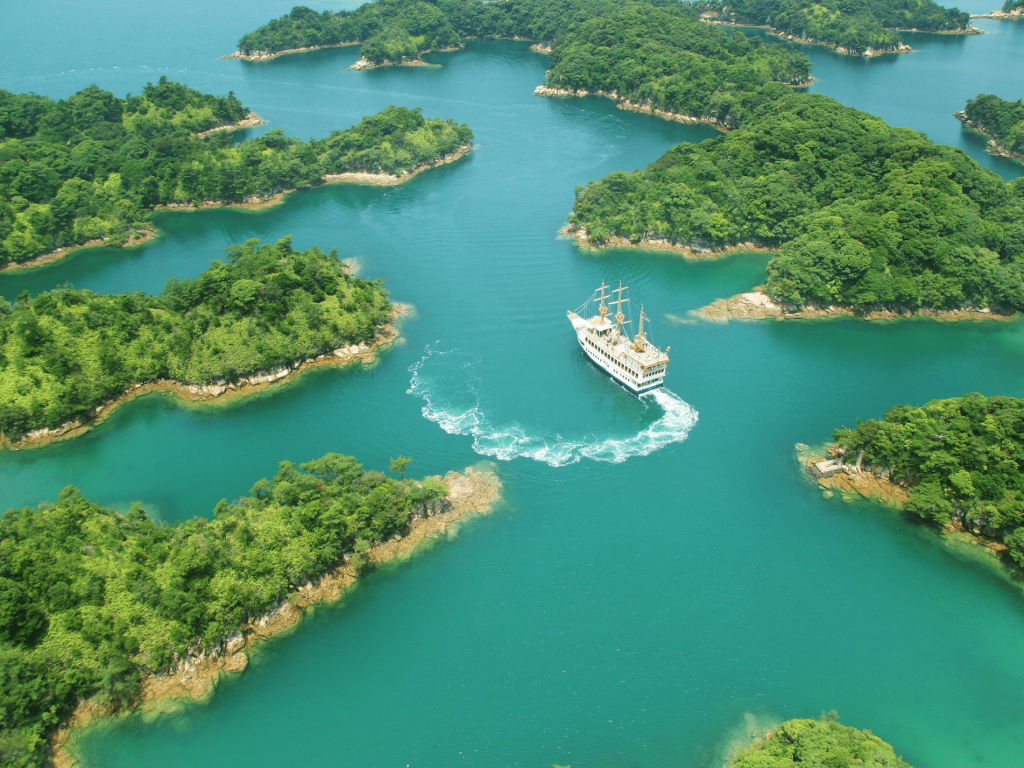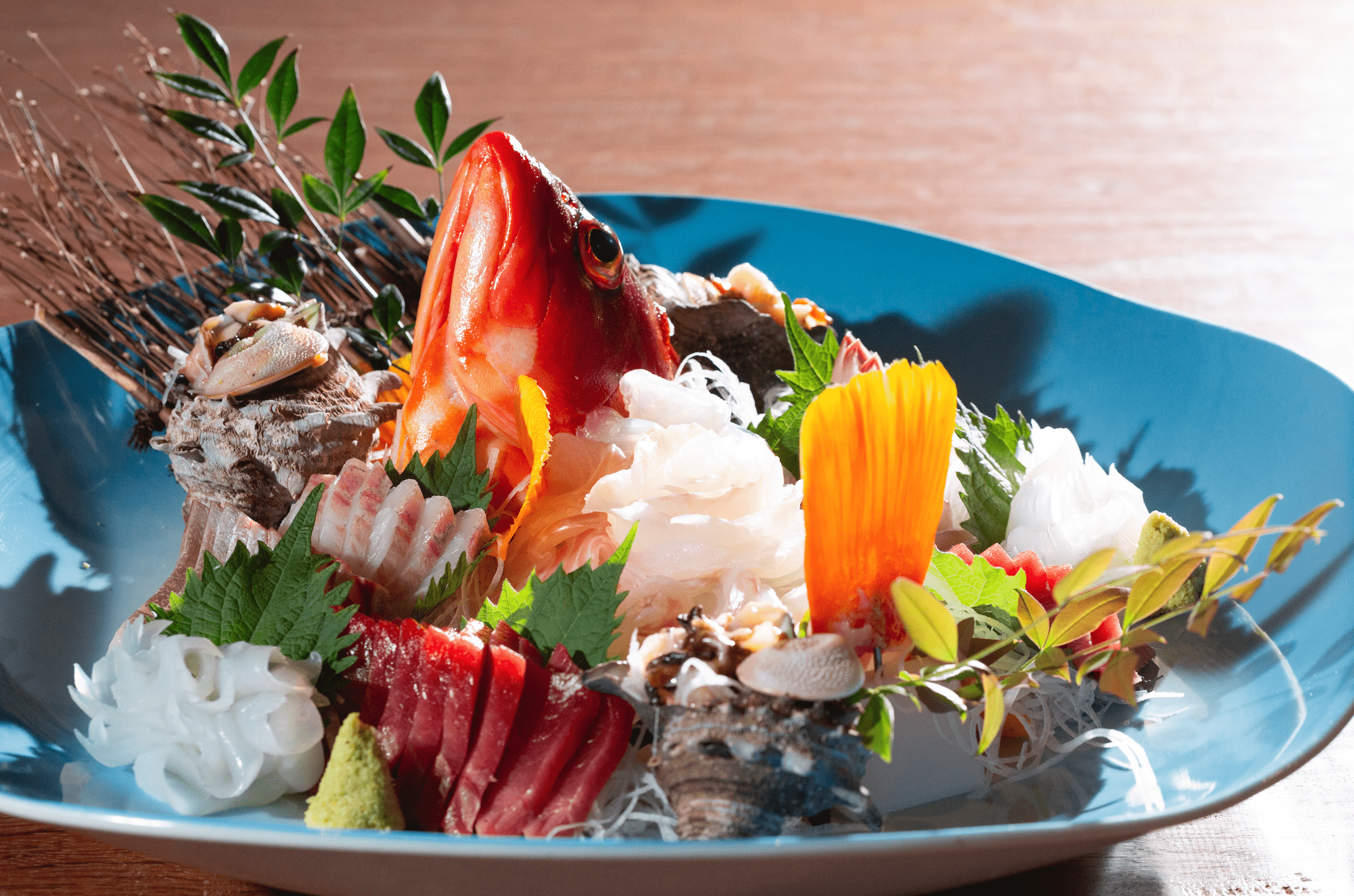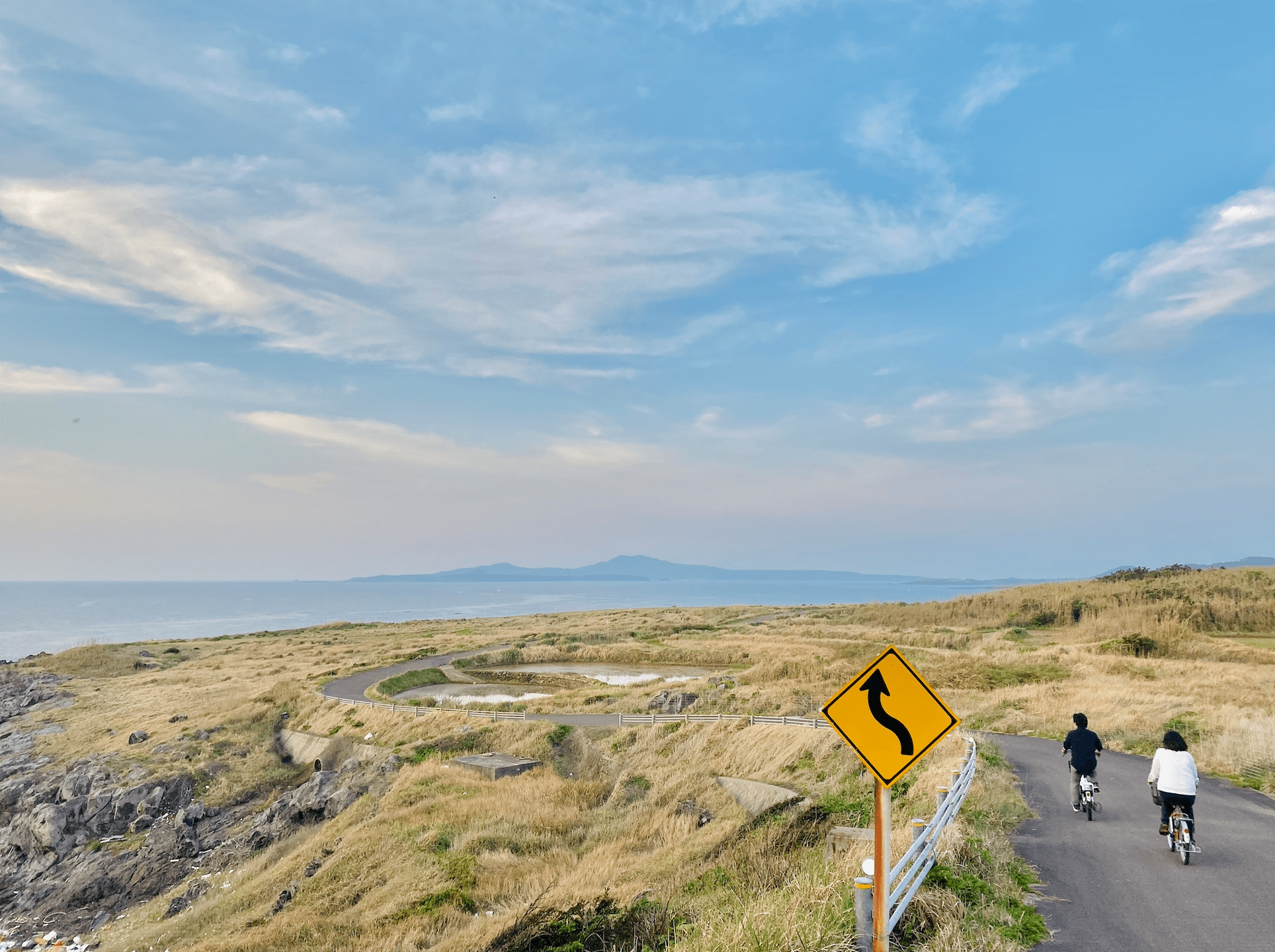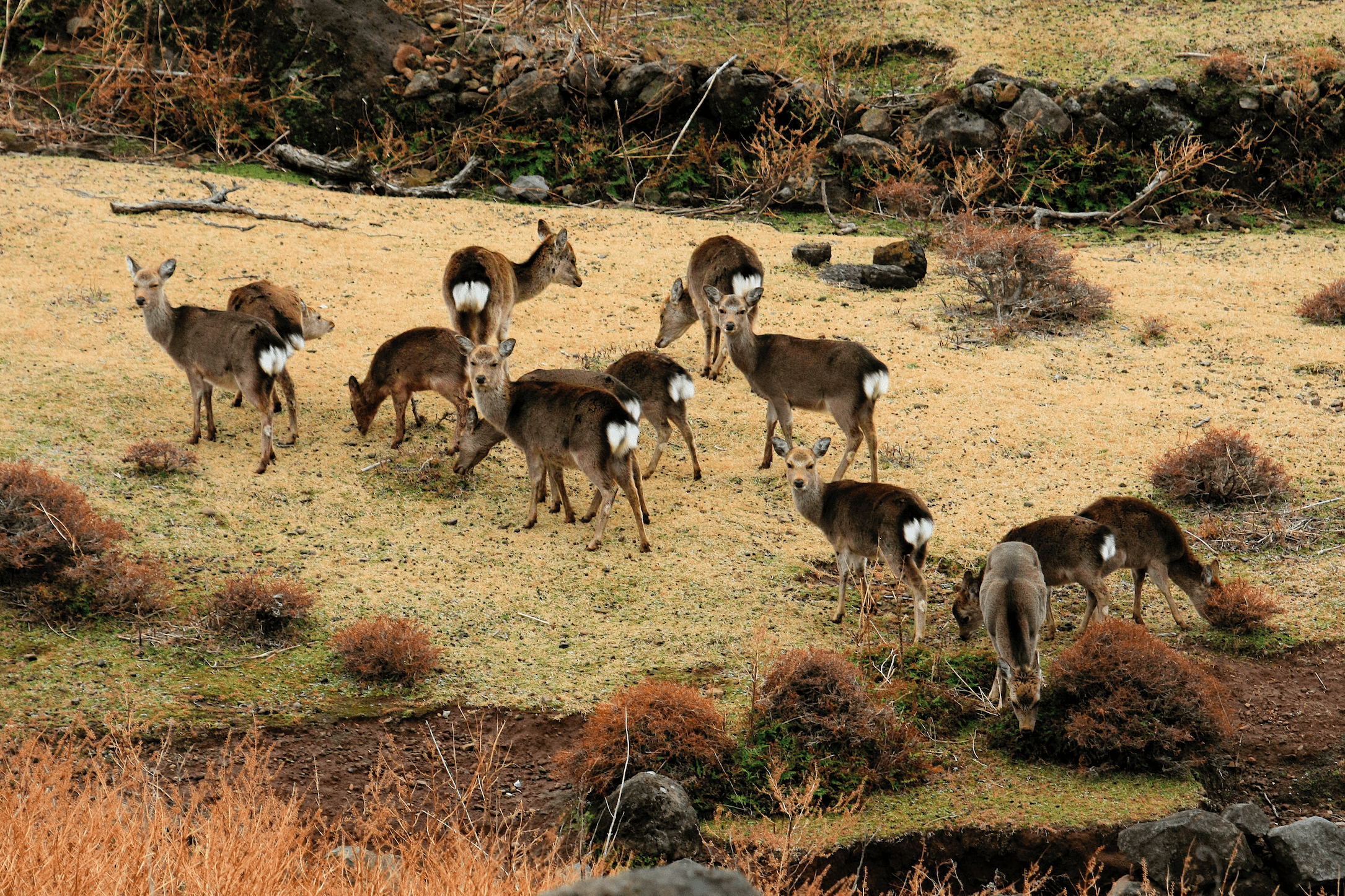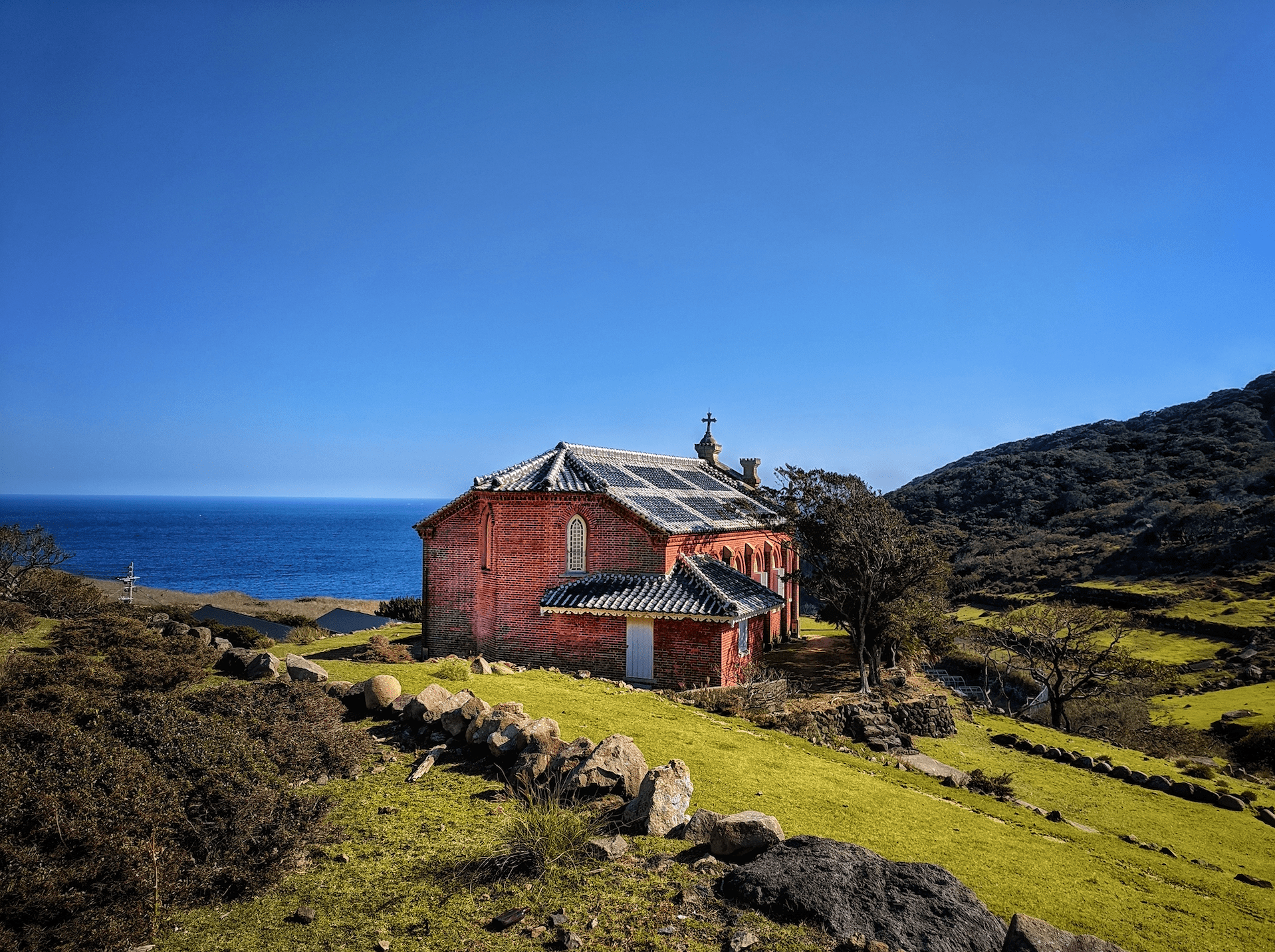Ojika Island off the coast of Nagasaki Prefecture is a place where a local fisherman will gift a fresh catch to a neighboring farmer and in turn find a basket of seasonal vegetables waiting on his doorstep the next morning.
Protected by Saikai National Park, this picturesque, remote island is located in the East China Sea at the northern reaches of the Goto Archipelago. The area is best known to foreign travelers as a haven for persecuted Christians during the Edo Period, but history goes back much further here as stone tools dated from 10,000 B.C. were discovered on the islands.
Ojika town consists of 17 islands of its own. Ojika Island is the most populated, with approximately 2,400 welcoming and generous residents. The locals, mostly farmers and fishermen, live in harmony with nature, and are happy to share the island’s abundance with guests.
Sasebo city (the second largest city in Nagasaki Prefecture) is the primary gateway to Ojika Island. After visiting the unique shopping districts of Sasebo and enjoying a cruise or excursion boat at Kujukushima Pearl Sea Resort, hop aboard a high-speed boat from Sasebo Port and arrive at Ojika Island within 90 minutes. Alternatively, the regular ferry takes about three hours.
With scenic beaches, the rolling turquoise sea, rustic countryside and historic sites to discover, let the locals guide you to a part of Japan that most people don’t get to see.
Stay at a Kominka
For accommodations, spend the night in a former samurai residence and walk in the same garden as Japan’s warriors or rest your bones in a traditional fisherman’s home tucked away in the narrow streets of an old fishing village.
Kominka are traditional Japanese houses, and visitors to Ojika Island can stay at one of six of these century-old folk houses. Each residence has been renovated to maintain the old world charm and aesthetics while providing modern conveniences.
Eat at a Folk House Restaurant
Ojika Island’s restaurants offer a bounty of local produce and seafood. Folk house restaurant Fujimatsu is a seafront restaurant located inside the former residence of the Fujimatsu family – whalers and sake brewers who helped build Ojika Island’s economy.
Included in the Michelin Guide Fukuoka-Saga-Nagasaki 2019 Special Edition, Fujimatsu’s chefs source ingredients, including fish, vegetables and rice, from local farmers and fishermen. The skilled chefs create elegant, seasonal dishes that elevate the natural beauty of the ingredients.
Explore by Bicycle
Ojika Island is not large (approximately 34km in circumference), yet in order to see all of its most magnificent sights, you might need a set of wheels – two wheels that is. Rent a bicycle (electric-assist bicycles are also available) from the Ojika Island Tourism office to easily navigate the island and enjoy a healthy dose of fresh air and exercise.
Most accessible from the port are the brilliant red beaches of Akahama Red Coast. Located on the south eastern side of the island, the area is rich with iron minerals, and the distinctive red rocks and gravel along the coastline offer a walk along the beach like no other.
Take your bike to the center of the island to travel along the Avenue of Pines (Himematsubara). This peaceful road is lined with tall pine trees forming a 400-meter-long green tunnel. Ride along the island’s northernmost peninsula to reach Kakinohama Beach, a beautiful, secluded spot where you can enjoy marine sports such as snorkeling and paddleboarding in the gentle turquoise waters. Head to the peninsula’s northernmost tip to visit Nagasaki Bana Pasture where you can see cows grazing on the lush grass with a picture-perfect view of the open sea.
Book a Guided Tour of Ojika Island
The Ojika Island Tourism office also provides English guides who are happy to share local stories and legends. Guides can introduce you to the ancient Chino-Kojima Shrine, where the torii gates lead visitors down to the seaside.
On Ojika Island’s western coast, visitors can cross a bridge to Madara Island to witness the second largest pothole in the world. This phenomenon is a cylindrical pothole naturally drilled three meters down through solid rock. The white torii gates contrasted with the blue sea offer an unforgettable view.
Meanwhile, the Cattle Memorial at the thinnest point of central Ojika Island might not be what you think. Ojika was once two islands, and in the Kamakura period a local lord undertook a landfill project, connecting the island as one. Numerous cattle used for the project passed away and this memorial was built as a monument to their sacrifice.
Visit an Old Fishing Village
The old fishing village in the Fuefuki area has historically been Ojika Island’s cultural and economic center. Spend time exploring the narrow backstreets as they offer a fascinating glimpse into the daily life of islanders. The buildings here are mostly more than 100 years old, showcasing the traditional Japanese architecture of the old days.
Take a Day Trip to Nozaki
No trip to Ojika is complete without a visit to Nozaki Island – easily accessible by ferry from Ojika Ferry Terminal and only 25 minutes away. Besides the 400 or so wild deer that roam the island, there is only one registered resident of Nozaki who manages the sole accommodation, the Nozaki Nature Village.
In 2018, the Remains of Villages on Nozaki Island were inscribed on the UNESCO World Heritage List as one of 12 components of Hidden Christian Sites in the Nagasaki Region. The red brick Nokubi Church, completed in 1908, is all that remains to remind visitors that Christian communities existed where practitioners once hid their faith from persecution.
The hill to reach the church is quite steep, making a rest stop at Nokubi Beach a welcome respite. The 300-meter-long white sand beach is especially breathtaking during sunrise as the coast faces east.
Escape into complete solitude on one of two trekking excursions on Nozaki Island. Travel along ancient pathways to Funamori Village (approximately 4.5 hours) to visit abandoned Christian remains. Another moderately difficult, five-plus hour trek through the pristine forest takes you to the shrine (built in AD 705) at Oe-Ishi, a 24-meter tall natural stone formation.
Whether you desire to relax while taking in breathtaking seascape views, discover rare artifacts of Japanese culture and history or indulge in traditional Japanese cuisine and hospitality, a trip to Ojika Island is just a boat-ride away.
More information at ojikajima.jp/en
Sponsored Post
Updated On December 28, 2022

